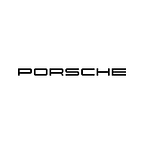Cross-functional Teams and Decoupled Alignment: The Cultural Dimension of a Cloud Project
Marcus Voß, Adrian Föder, and their team are currently busy moving the digital customer service platform My Porsche to the cloud. In their previous post, they shared failures and learnings of the My Porsche cloud journey. Now, the focus is on the teams and the cultural dimension of the process.
Porsche is evolving into a heavy user of cloud technology. The My Porsche unit, for example, has an adoption rate of 75 percent as of early 2020. In our previous post, we talked about the cloud journey of My Porsche in detail and discussed the benefits and challenges of moving to the cloud. We turn our attention now to the My Porsche teams, discuss the cultural dimension of the cloud journey and consider the concept of Decoupled Alignment. So, without further ado, how were we able to do it?
Bringing together what belongs together: cross-functional, dedicated teams
Underpinning our cloud journey is the technical expertise, experience and attitude of our teams. The My Porsche unit is organized in cross-functional, dedicated teams that each consist of developers, UX designers, business analysts, product owners, etc, so that every team has all the relevant skills and expertise needed to effectively complete their jobs. Everyone is dedicated to one team — i.e. there are no side projects — and focuses on one thing to get the job done. All involved teams are sharing a common vision and purpose: they build the solution, they run it and, even more importantly, they own it.
We broke down the boundaries between development and operations as well as between IT and business, thereby bringing together what belongs together and what had previously been kept apart. Thus, everyone is working together towards aligned goals.
The concept of Decoupled Alignment
Our approach to our work is defined by a culture of collaboration, shared responsibility and trust. From a technology perspective, however, we work in loosely coupled teams. There are as few dependencies as possible between the teams and their products. We always strive to lessen these dependencies, especially avoiding to introduce new ones.
In pursuit of a high level of traceability and reproducibility, we are keen to automate everything that comes our way — exclusively in the cloud, of course. Combined with more and more measurements, decisions are based on data and analysis instead of a gut feeling.
And yet, the loose coupling of our teams would not work without a common approach and understanding of key principles. Decoupled Alignment is therefore a very important concept for us — we align many decoupled teams by sharing a common set of rules, conventions and guidelines that enable us to act in concert.
Our transformation journey, in a nutshell, has involved shifting from
- management centricity to customer centricity
- talking to building
- standardized building block to standardized behavior
- departments to cross-functional teams
- command & control to empowerment
- hope-driven to data-driven
Standardizing our tools and preserving software development knowledge with a Tech Radar
Instead of prescribing a common toolset, we encourage the teams to use the tools that fit the team best and to choose their technology to solve customers’ demands. To orient ourselves in this jungle of tools, we set up our own Technology Radar with the technology that ThoughtWorks provides. The Technology Radar functions as a kind of map for software development techniques, tools, languages and platforms used in the My Porsche environment and allows us to create a seamless user experience.
The four concentric circles of the Technology Radar reflect the “maturity” of each blip:
- Whenever we decide that a particular blip does not fit our needs anymore, even if it’s considered an industry standard out there, we put it on hold.
- When a team decides to try something new, it has to announce this intention in our bi-weekly “Tech Guild” community meeting. When there is common agreement that this makes sense and there is no better option, we introduce this one into the assess circle. The particular team commits to report back their experience later.
- If it turns out that it has a great positive impact during the planning and implementing the feature, we set it to trial.
- If a blip is successfully used in production or results in a productive feature in at least two teams, we set it to adopt.
With the radar handled that way, we commonly agree on not deriving from what’s on it without discussing and reflecting it during the “Tech Guild” meetings.
The result is an always-current, nicely curated number of blips that gives the teams a powerful toolkit to build and maintain their product in the My Porsche ecosystem.
With this mind, and with this toolset at hand, we are now all set up to arrive at the destination of our cloud journey — a 100 percent adoption rate.
Adrian Föder is Solution Architect at Porsche AG.
Marcus Voß is Product Owner My Porsche Cloud & Tools at Porsche AG.
About this publication: Where innovation meets tradition. There’s more to Porsche than sports cars — we’re tackling new challenges, develop digital products and think digital with a focus on the customer. On our Medium blog, we tell these stories. It’s about our #nextvisions, smart technologies and the people that drive our digital journey. Please follow us on Twitter (Porsche Digital, Next Visions), Instagram (Porsche Digital, Next Visions, Porsche Newsroom) and LinkedIn (Porsche AG, Porsche Digital) for more.
